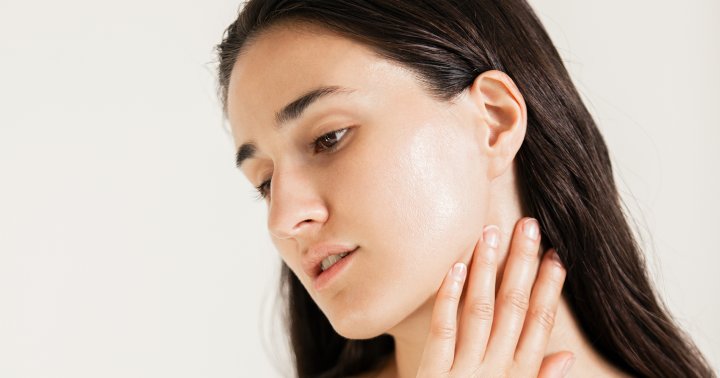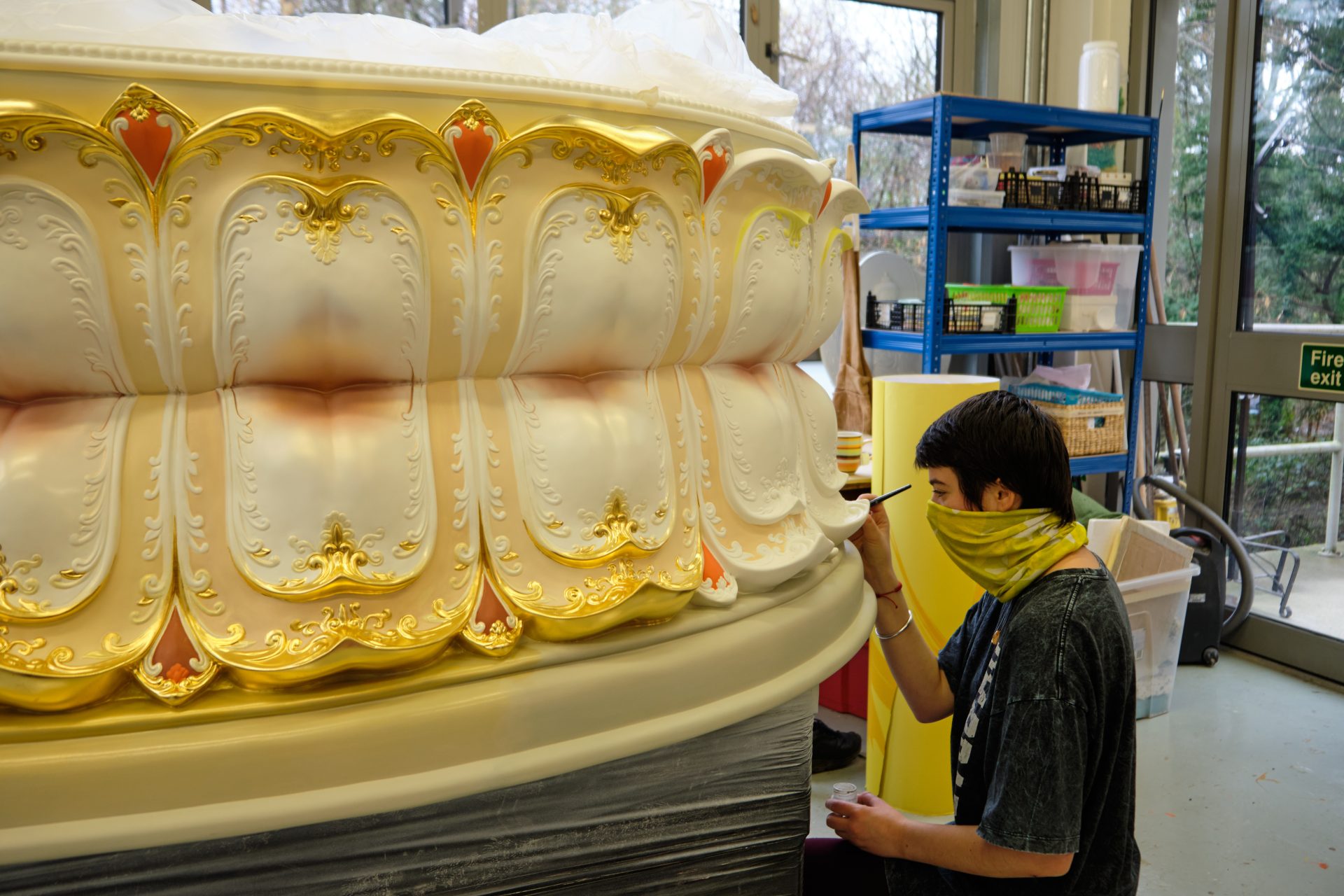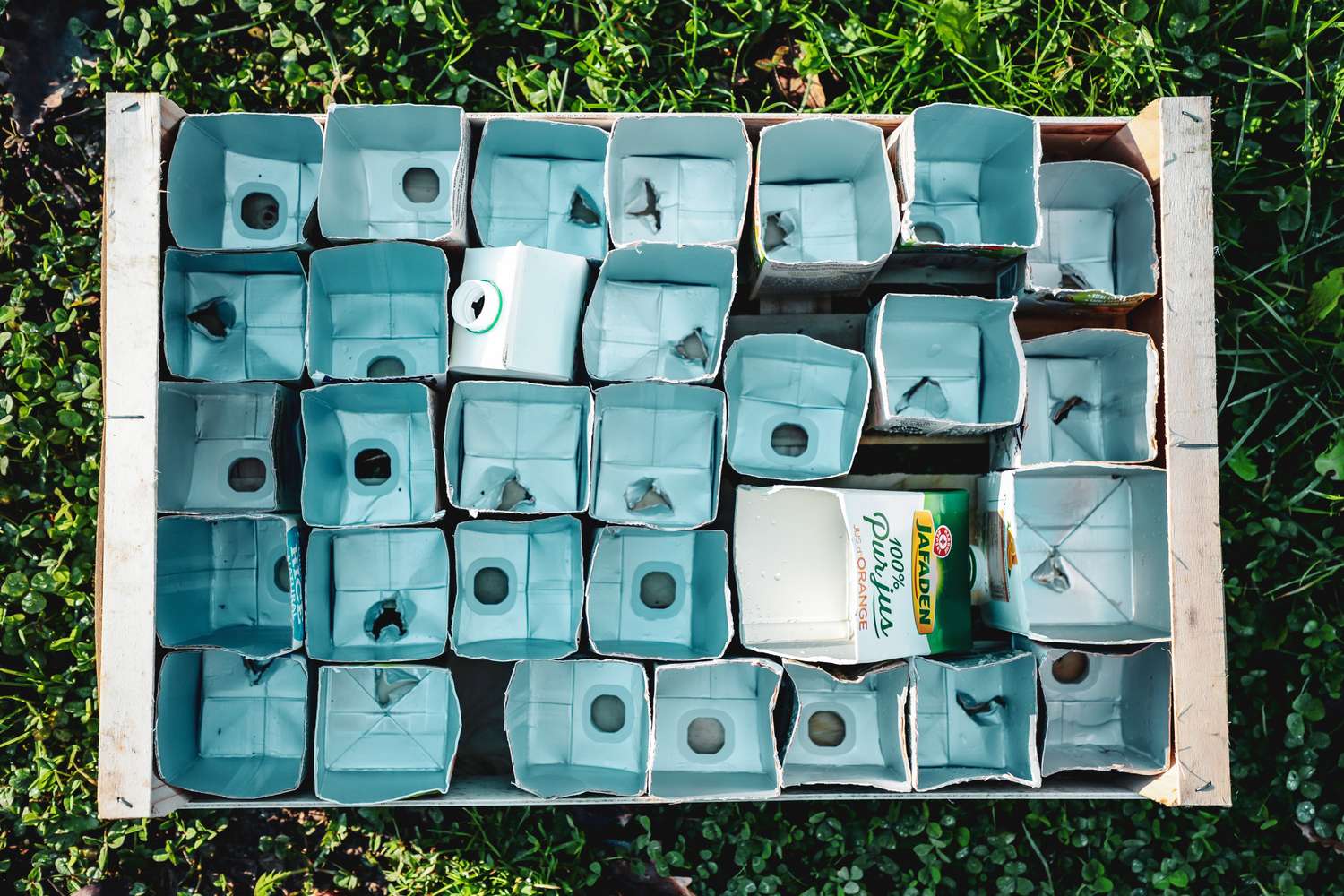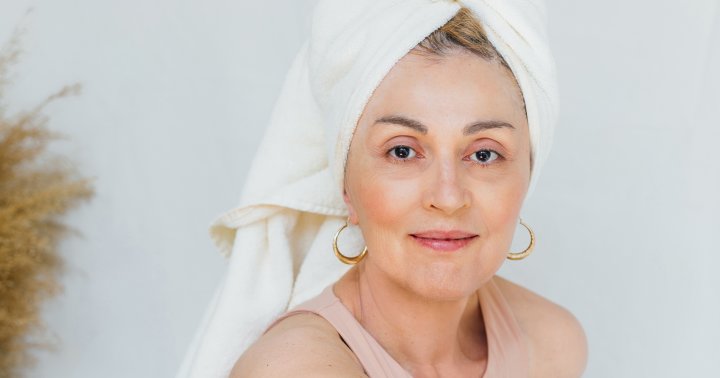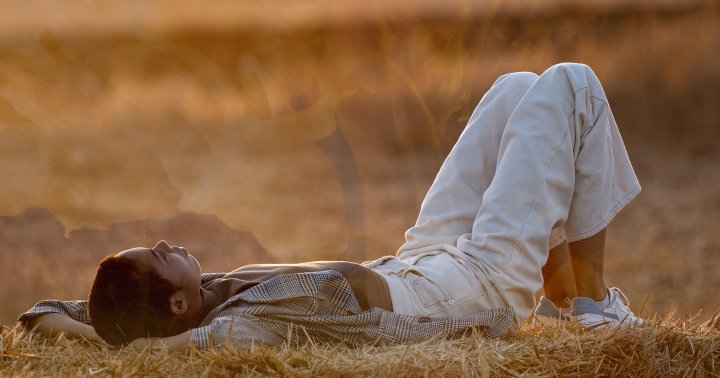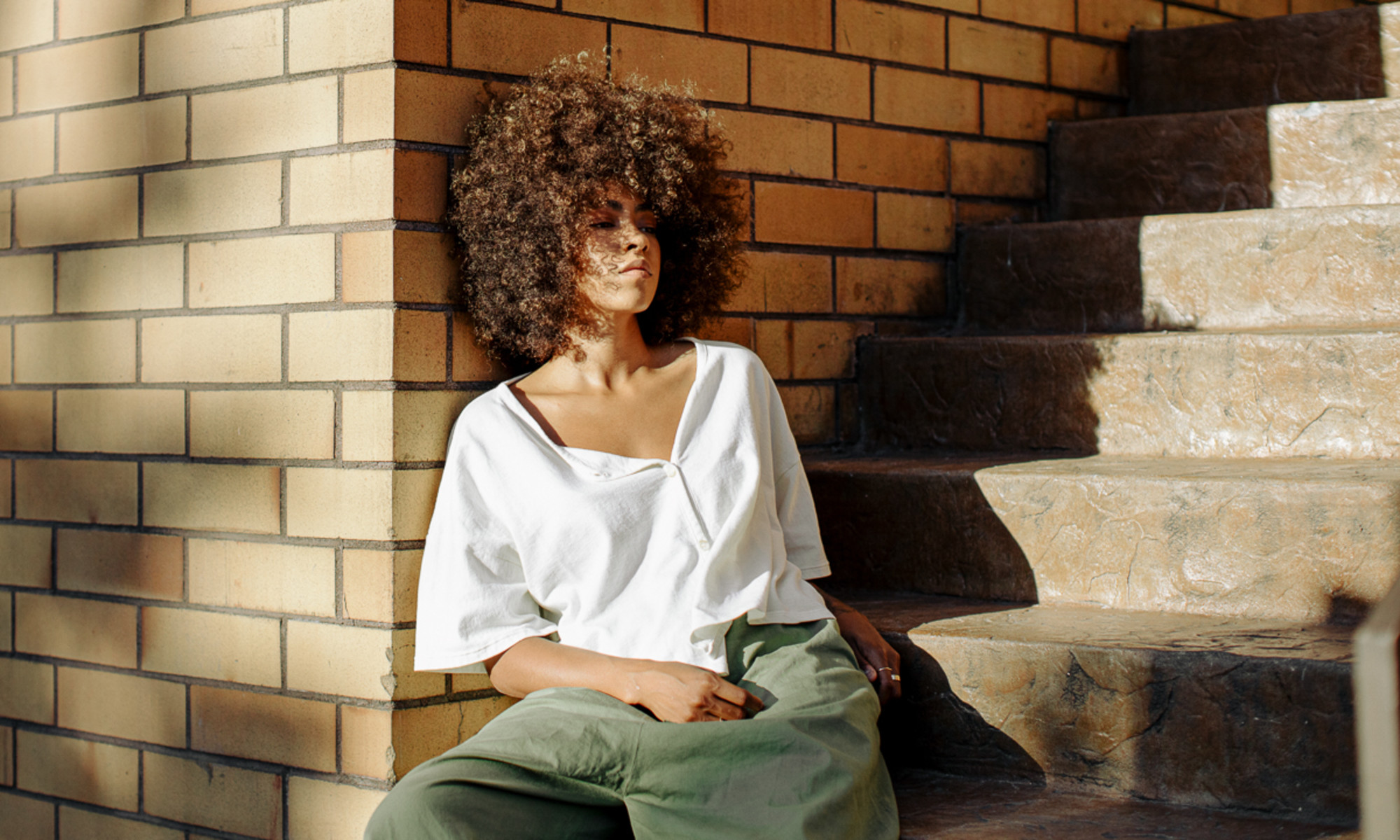How to Do Puppy Pose (Uttana Shishosana) in Yoga—Proper Form, Variations, and Common Mistakes
The post How to Do Puppy Pose (Uttana Shishosana) in Yoga—Proper Form, Variations, and Common Mistakes appeared first on The Yoga Nomads.
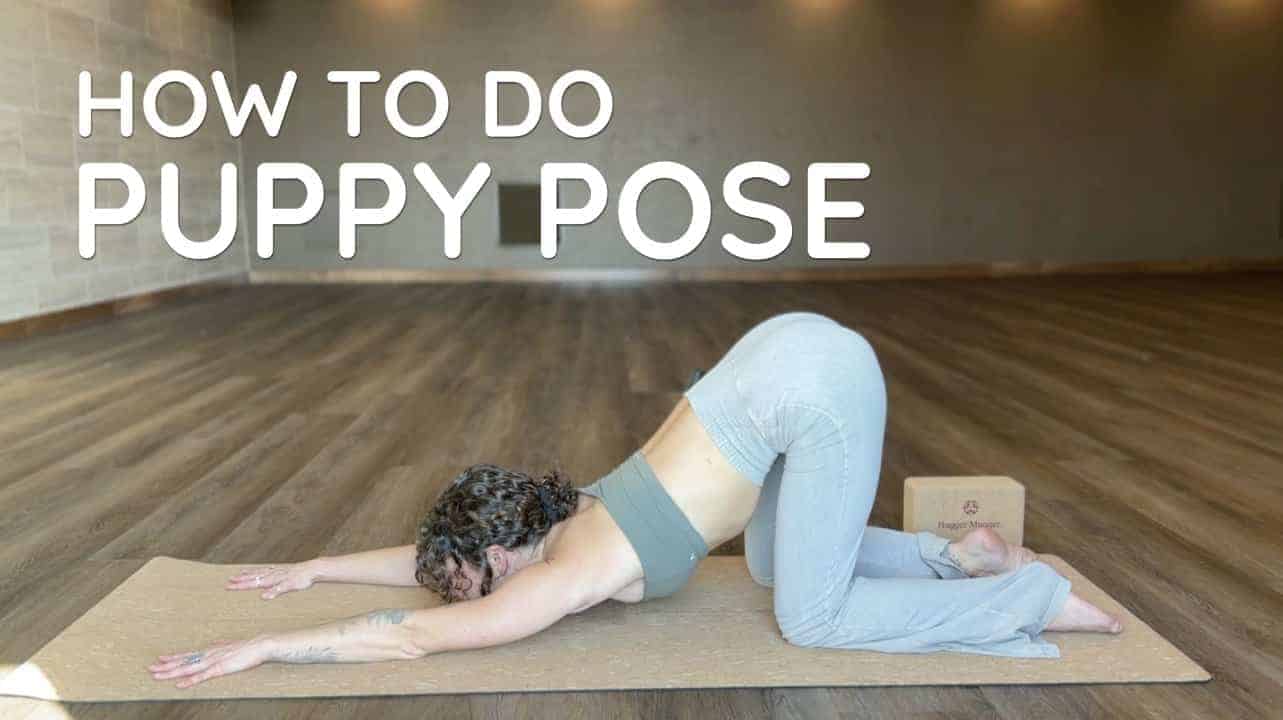
When your upper back seems to be screaming at you for hunching over technology all day, Puppy Pose is the perfect beginner-friendly asana to stretch the shoulders and lengthen the spine.
Also known as Melting Heart Pose, Puppy Pose is a rejuvenating heart opener that calms the mind and opens the heart chakra for more balance and joy in daily life. You can think of this pose as a cross between Downward Facing Dog and Child’s Pose.
Let’s dig into everything you need to know about Puppy Pose, including how to practice and teach it safely.
Prefer video? Here’s our complete tutorial on how to perform the pose:
Uttana Shishosana: The Intense Puppy
In Sanskrit, Extended Puppy Pose is known as Uttana Shishosana. This translates to “intense baby dog pose” as a reference to the powerful chest-opening and shoulder stretching. As you lower down into a full puppy position, the deep backbend can work wonders on the stagnant spinal tension that we accumulate from hunching over in our daily lives. In spite of its intense name, this asana can be relaxing and stress-relieving with the right form and props.
Is puppy pose a heart opener?
Puppy Pose is also called Melting Heart Poes because it is a prone (downward-facing) position that opens the heart toward the Earth. In its full expression, this asana creates a big stretch across the chest, collar-bones, and upper spine while the hips stretch reach the sky.
This heart-opening posture is a slight inversion that brings the heart just higher than the head, which creates a sense of calmness and stress relief throughout the body. However, it is important to enter and exit the pose slowly because the changes in blood flow can cause dizziness or lightheadedness.
Pose Benefits
Puppy Pose is a back-bending posture that targets your spine and shoulders. It can leave you feeling calm, stress-free, and playful just like a puppy!
What are the benefits of practicing puppy pose?
Puppy Pose is the perfect restorative posture for anyone who spends a lot of time at a desk or on their phone. It directly counteracts poor posture by deeply arching and stretching your entire back. Even if you don’t go all the way into the extended expression, you can still reap all of these benefits from any variation of Puppy Pose:
Relieve upper back pain: Puppy Pose feels absolutely divine for tight shoulders or a tense upper spine. As you lower toward the floor with your arms outstretched, the shoulder blades can roll back and down to release pressure all the way through the neck. Improves posture: Most modern people are walking around like hunchbacks with chronic tension in their upper backs. Regularly practicing Puppy Pose can dramatically improve your posture and help you stand up straighter. This not only helps with back pain, but aids in digestion, energy, confidence, and core strength. Stress relief: Bringing the heart slightly above the head creates a mild inversion that helps you relax and de-stress. The change in direction of your blood flow helps soothe your nervous system and lower the heart rate after a stressful workday or intense yoga practice. Calmness and energy: Like Downward Dog, Puppy Pose sends a soothing, calm energy throughout the body. You can close your eyes and relax into the posture, then wake up and feel more energized for the rest of your day. Opens the chest and heart chakra: A blocked heart chakra can lead to a lack of self-love, a fear of vulnerability, and feeling disconnected in interpersonal relationships. Physical signs of heart chakra imbalance may include chronic upper back pain and asthma or circulation problems. This posture helps to stretch open the chest and balance the heart energy so you can feel safe and open to love in all its forms. Stretch your stomach: If your abs are feeling particularly sore after a big workout, Puppy Pose also offers a subtle stretch across the stomach that can soothe digestion and reduce bloating.Step-by-Step Instructions for Uttana Shishosana
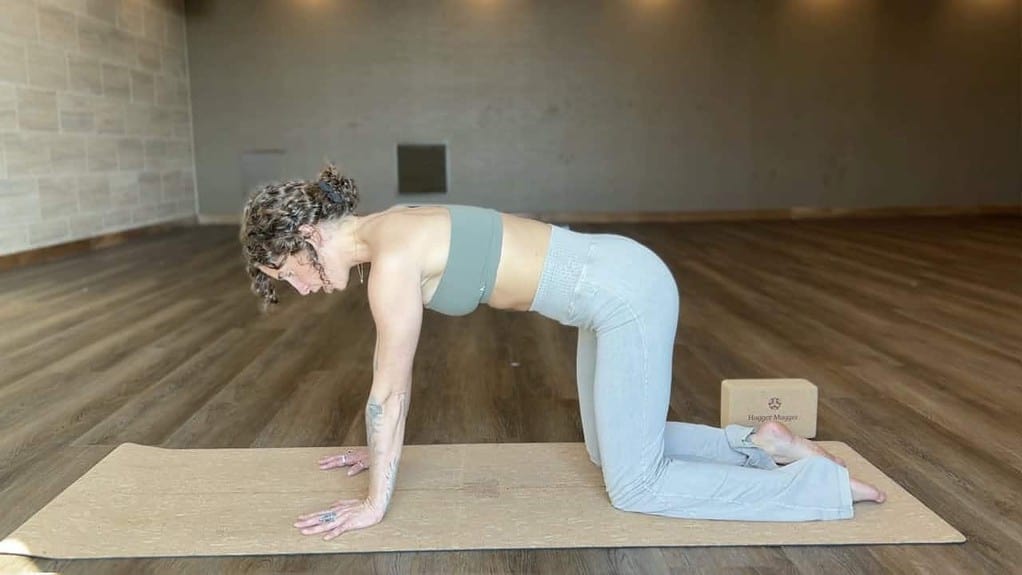 Begin in Tabletop position on all fours. Keep your shoulders stacked above your wrists and your hips stacked above your knees, with the tops of your feet resting on the mat. Bring your knees to touch each other.
Walk your hands forward a few inches and spread the fingers as you root into the floor.
On an exhale, reach your tailbone toward the sky and let your chest begin melting toward the floor.
Inhale and activate your arms so that your elbows are lifted from the ground and your forearms are pressing into the mat.
Exhale and melt deeper as your forehead touches the floor. Let your stomach reach back toward your thighs and your butt continue lifting upward.
Keep the hips stacked over your knees and let your spine naturally curve as your upper body opens with gravity. Do not force it.
On each inhale, strengthen the arms and core. On each exhale, allow yourself to release downward. Keep reaching forward with your arms. Feel your chest melt downward and your spine elongate.
Hold and breathe for 30 seconds to 1 minute.
On an exhale, slowly lift your forehead, release your neck, and look forward. Press into your hands and walk them back toward your body.
Very slowly lift to return to a tabletop or kneeling position. If you feel dizzy or lightheaded, breathe and stabilize before moving again.
Begin in Tabletop position on all fours. Keep your shoulders stacked above your wrists and your hips stacked above your knees, with the tops of your feet resting on the mat. Bring your knees to touch each other.
Walk your hands forward a few inches and spread the fingers as you root into the floor.
On an exhale, reach your tailbone toward the sky and let your chest begin melting toward the floor.
Inhale and activate your arms so that your elbows are lifted from the ground and your forearms are pressing into the mat.
Exhale and melt deeper as your forehead touches the floor. Let your stomach reach back toward your thighs and your butt continue lifting upward.
Keep the hips stacked over your knees and let your spine naturally curve as your upper body opens with gravity. Do not force it.
On each inhale, strengthen the arms and core. On each exhale, allow yourself to release downward. Keep reaching forward with your arms. Feel your chest melt downward and your spine elongate.
Hold and breathe for 30 seconds to 1 minute.
On an exhale, slowly lift your forehead, release your neck, and look forward. Press into your hands and walk them back toward your body.
Very slowly lift to return to a tabletop or kneeling position. If you feel dizzy or lightheaded, breathe and stabilize before moving again.
How long should you hold puppy pose?
Puppy Pose should be held for 5 to 10 breaths, or 30 seconds to 1 minute. It is important to slowly and deeply inhale and exhale as you stretch through the entire spine. Unless you are experienced with this posture, holding the pose longer could lead to feeling lightheaded, dizzy, or faint.
Tips for Mastering the Pose
Mastering Extended Puppy Pose is no easy feat, especially if you have tight shoulders or chronic tension in your back. These tips help you ease into the posture and use props when needed.
Tip #1: Relax your neck
Puppies are virtually tension-free balls of fur. Channel that energy by allowing your neck to chill out and elongate. Don’t try to look forward. Rest your third eye on the mat and breathe as you release any tension in the neck.
If you feel like you can’t relax your neck and head, try placing a block beneath the forehead. We explain this variation more below.
Tip #2: Keep active arms and palms pressing down
Your arms are the most active part of your body during Puppy Pose. Keep your hands active by pressing the knuckles of your fingers into the floor and keeping your elbows lifted from the mat. This well help you go deeper into the posture while staying supported. Imagine your hands pushing forward and away from your body so that your torso can melt back and down.
Tip #3: Cushion your knees
If your knees feel uncomfortable in Puppy Pose, use a rolled up blanket or yoga knee pads to support them. This posture is all about opening the heart, but that can be hard to do if your joints are aching on the hard floor.
Tip #4: Pull your hips back and up
The resistance between your lower body and upper body makes this pose so relieving and enjoyable. As your hips reach up and back, your chest and heart can reach forward and down. Imagine a belt looped around your hips and someone pulling your buttocks up toward the sky. Reach up with your tailbone so you can create a great big slope along your spine.
Common Mistakes
Extended Puppy Pose is not always as easy as it looks. Avoid these mistakes to ensure that you don’t injure your back or force your spine into a position it isn’t ready for.
Common Mistake #1: Moving too quickly
Sliding into Puppy too quickly can hurt your back or kink up your spine. Entering Extended Puppy requires patience and breathwork. It is one of those yoga poses that you really need to take your time with.
How to Fix It: It’s important to thoroughly warm up before attempting this posture. Then, prepare a strong foundation before dive in. Press into your arms and slowly arch your chest down and back.
Common Mistake #2: Inactive arms
It is natural to flop downwards into a restorative asana, but inactive arms could cause you to open your chest farther than you’re ready. Your arms are the foundation of this pose that give you control over how deep you go. If you find yourself slipping too low and feeling pain in the upper spine, you need to activate your arms.
How to Fix It: Keep your upper arms engaged and palms pressing into the mat so that your elbows are lifted from the floor. The armpits should be long and stretched out. Check that your elbows are rotated inwards and not splaying out.
Common Mistake #3: Lifted chin
Beginners often try to focus forward as they go back into Extended Puppy, but lifting the chin can crunch up your neck and cause more upper back pain.
How to Fix It: Tuck your chin under and place your third eye (forehead) directly on the mat. Imagine your neck as an elongated part of your spine.
Note: Some advanced versions of Extended Puppy Pose involve arching the neck backwards to deepen the backbend. Only attempt this under the guidance of an experienced yoga teacher.
Variations
There are several ways to modify Puppy Pose based on your flexibility and comfort level.
Entry Level: Half Dog Pose Against a Wall
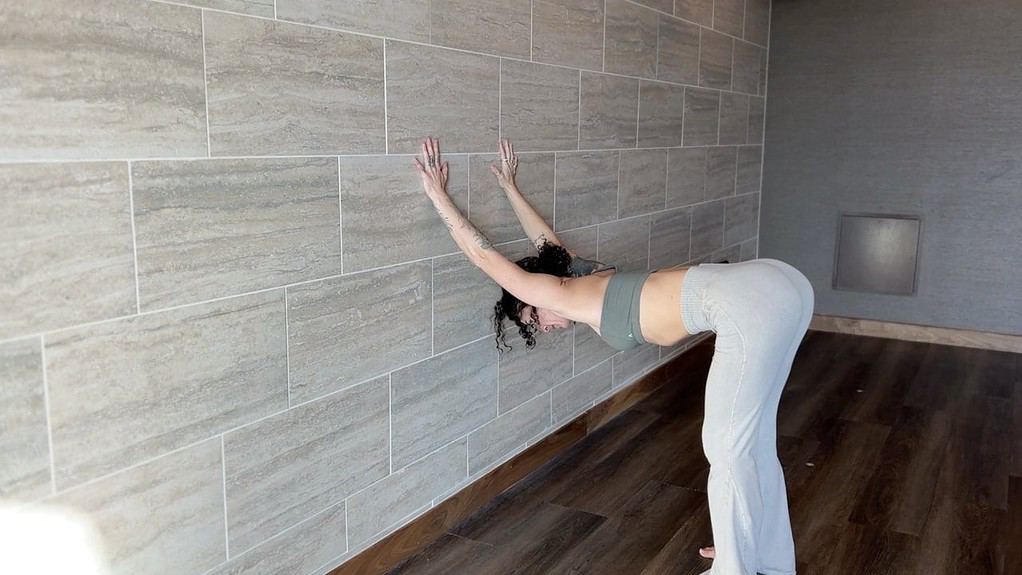
For those who have a lot of tension in the upper back, Half Dog is the gentlest way to ease into Extended Puppy.
Face your body against a wall about a leg’s length away. Place your palms on the wall shoulder-width apart. You can keep the hands at shoulder height for an easier stretch or lower to elbow height if you are more flexible. Press your knuckles into the wall and elongate your spine. Slightly tuck your chin and allow your chest to drop down between your arms. Feel your shoulder blades press toward each other. Your legs remain straight. Relax your neck and take five deep breaths. Slowly release by pushing off the wall to stand back up.Beginner-Friendly: Puppy with a Block for Your Forehead
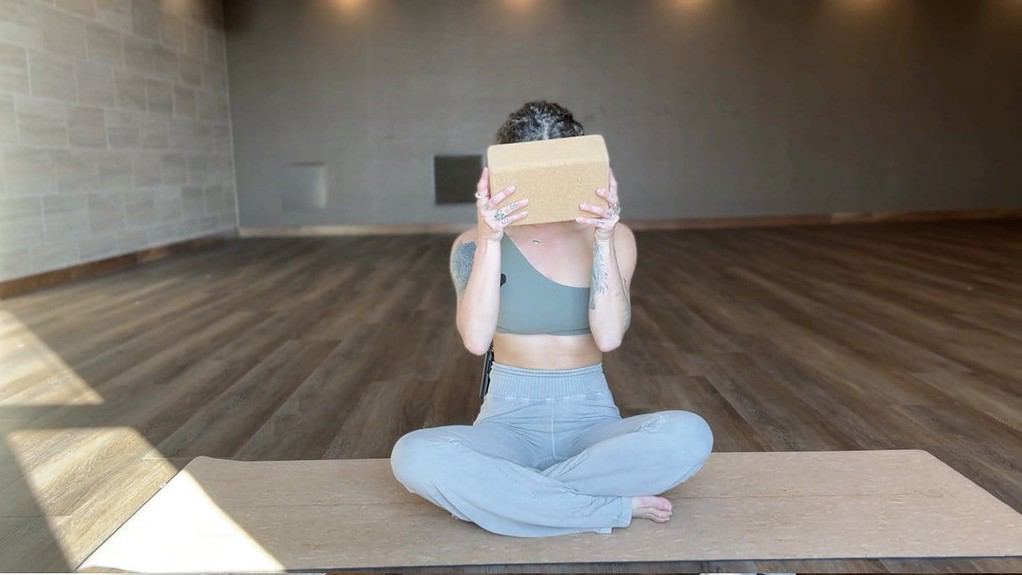
Beginners may have trouble arching their back enough to reach their head to the floor. Placing a block beneath the forehead softens the spinal curve. Rest your third eye on a foam or cork yoga block and stretch your arms overhead on each side of the block.
Advanced Stretch: Extended Puppy Pose with Blocks Under Elbows
If your shoulders are already super flexible, you can advance the heart-expanding benefits of Extended Puppy by placing your elbows on two blocks and joining your hands in prayer position. This will allow your chest to melt deeper toward the Earth.
Be sure to place the blocks shoulder-width apart in front of you before beginning. Bend your arms so that your hands reach directly upward and your head goes down between them.
Safety and Precautions
Avoid practicing Extended Puppy if you have injuries in your knees, hips, shoulders, or spine. If you experience pain in your shoulders, back off and move your hands outward.
Always be careful when exiting Extended Puppy Pose because you may get dizzy or lightheaded.
Don’t practice this pose if you’re pregnant or have cardiovascular disease.
Teaching the Pose
When teaching Extended Puppy Pose, use these extra cues to safely guide students in and out of the pose:
Don’t let your knees spread wider than your hips. Keep your elbows lifted and inward. Avoid splaying them out. Push your hips halfway back toward your heels. Keep your hips directly over your knees. Activate your arms by pressing your palms into the mat. Imagine your shoulder blades kissing on your back. Allow your heart to melt toward the Earth.Preparatory Poses
Child’s Pose (Balasana) Cat/Cow Pose (Marjaiasana) Bridge Pose (Setu Bandha Sarvangasana) Upward Facing Dog (Udrhva Mukha Svanasana)Counter Poses
Downward Facing Dog (Adho Mukha Svanasana) Cobra Pose (Bhujangasana) Child’s Pose (Balasana) Wind-Relieving Pose (Pavanmuktasana)Conclusion
We all could use a little more back-bending and heart-opening. Next time you are feeling tense or hunched over, melt into Uttana Shishosana and channel your inner puppy.
Namaste!

 JimMin
JimMin 







